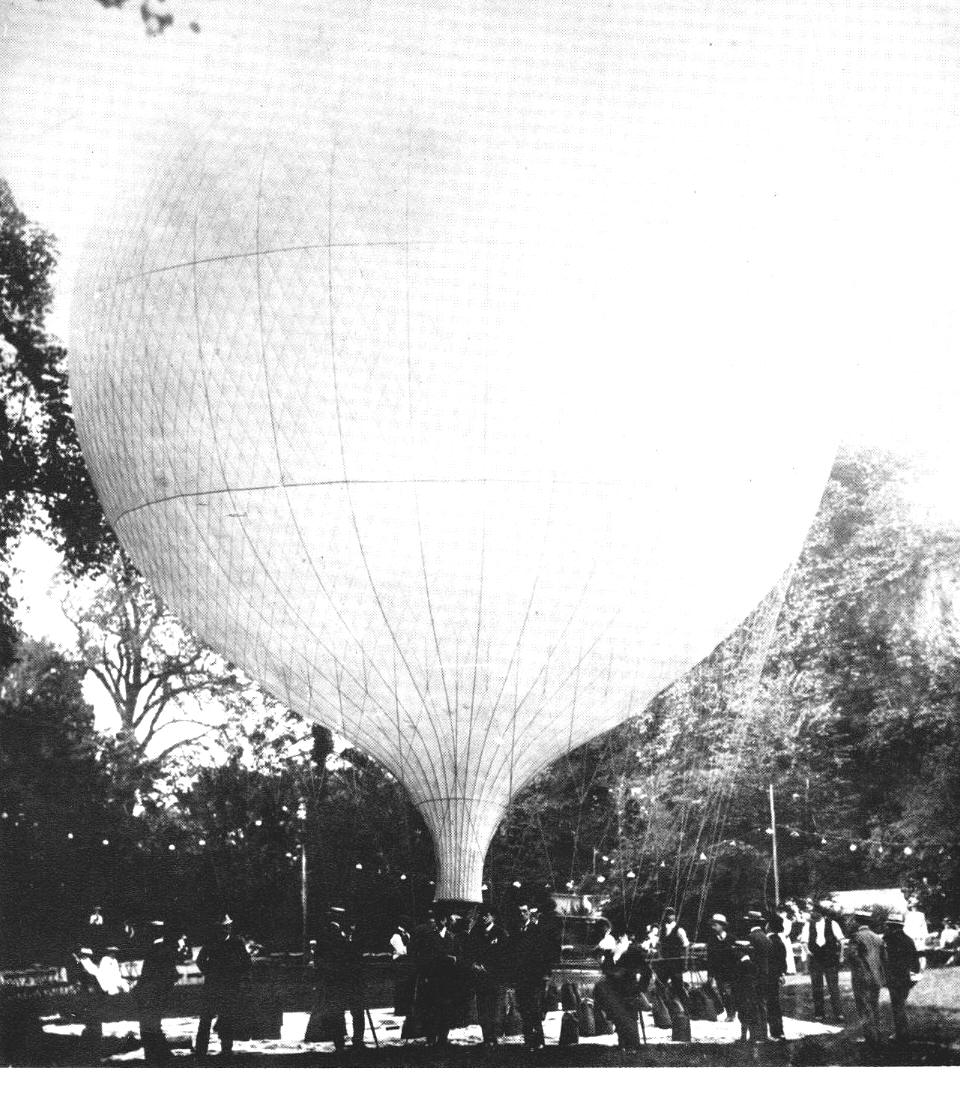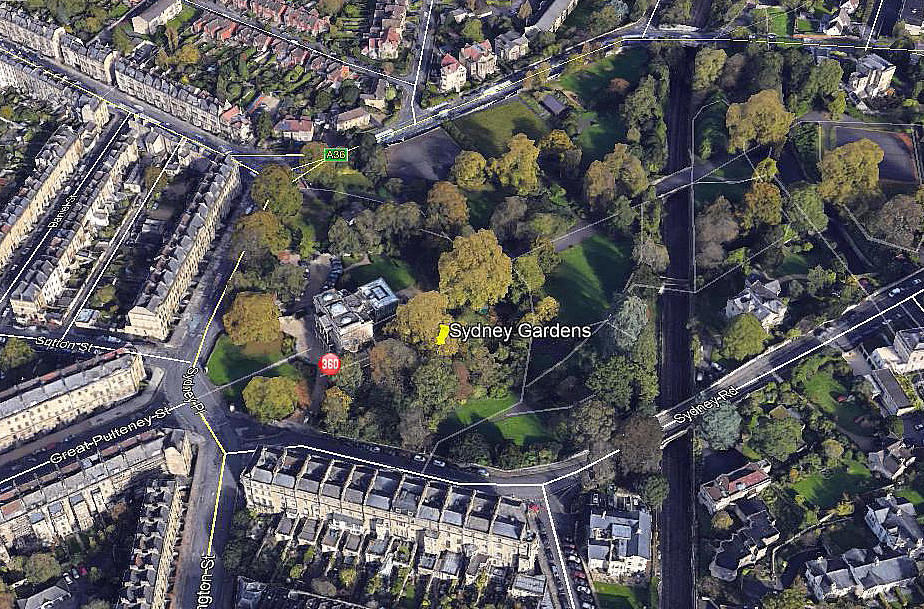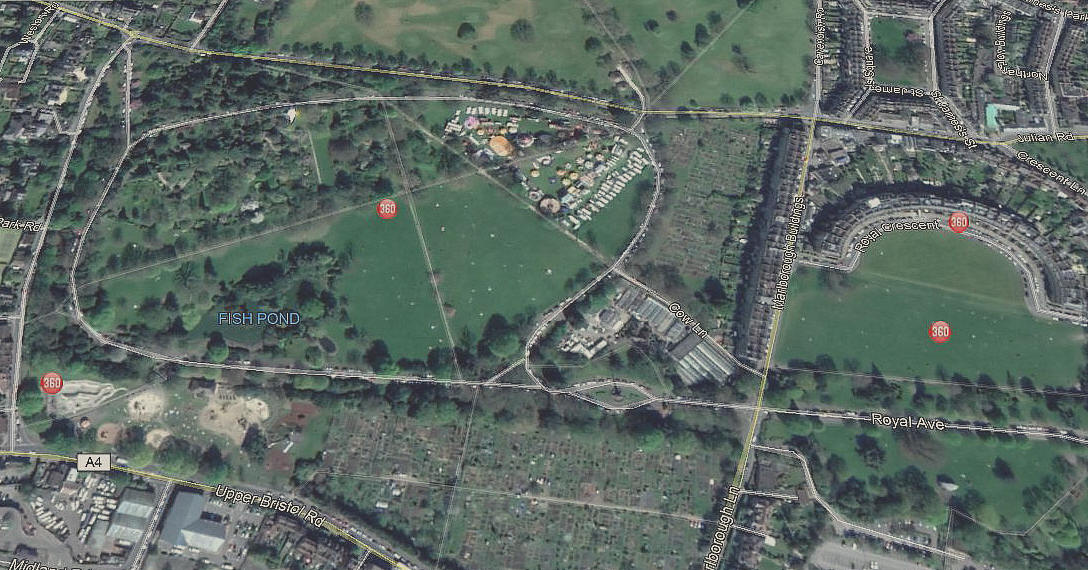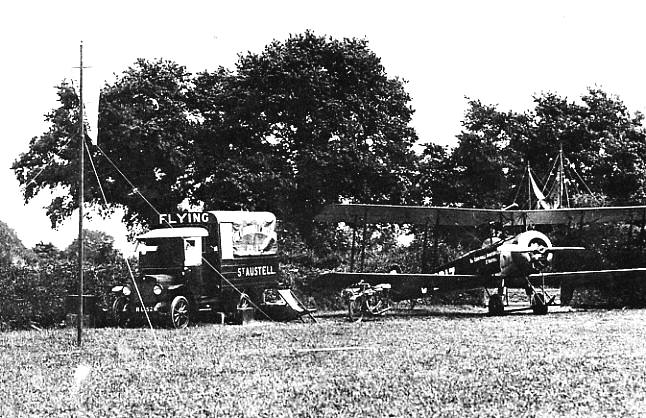Bath flying sites
Note: This map only shows the position of Bath city within the UK.
BATH see also CLAVERTON
BATH see also GLASSHOUSE FARM
BATH see also NEWTON St LOE
BATH see also ODD DOWN
BATH see also ROYAL UNITED HOSPITAL
BATH: Balloon ascent
NOTES: A balloon ascent was made, in Bath, in 1802. Obviously regarded as a significant event, (see the next two entries below), is anything more now known? It would seem this ascent was made by the Frenchman Andre-Jacques Garnerin, and his subsequent parachute jump had fatal results? He had earlier held a demonstration in London.
BATH: Balloon ascent
Note: The first picture has been scanned from Flying and Ballooning by John Fabb, published in 1980. The second picture was obtained from Google Earth ©
No doubt there weren't quite as many mature trees then, as there are now.
Location: Sydney Gardens is just NE of Bath city centre
NOTE: In his book Flying and Ballooning John Fabb has a photograph captioned; “To celebrate the centenary of the first balloon ascent from the City of Bath in 1802, a balloon carrying two men, Professor Gaudron and Mr Poole, ascended from Sydney Gardens, Bath in 1902.”
BATH: Balloon launching site
NOTES: In 1881 Captain Templar flying an Army balloon ascended fron Bath carrying two passengers; Mr W Powell the MP for Malmesbury and Mr Agg-Gardiner. A strengthening wind from the north took them towards Bridport in Dorset at which point it was estimated as being 30mph. On reaching the coast Captain Templar attempted to land the balloon approaching the cliffs, (the ripping panel had yet to be invented), and in the ensuing mess Captain Templar, still clinging on to the valve cord was dumped overboard.
Mr Agg-Gardiner jumped out breaking a leg. Mr Powell however stayed put in the balloon basket, was carried out to sea and disappeared forever.
TWO MORE BALLOONING SITES
Mr Tim Hill has kindly informed that there were/are two more ballooning sites in Bath. One was the gas works, coal gas being a much favoured lifting agent, comparitively cheap and relatively abundant. Although of course nowhere near as efficient as hydrogen. The gas works were alongside the A4 leading to Bristol and a main was laid to the balloon ascent field.
Note: This picture was obtained from Google Earth ©
The second site is Royal Victoria Park, just north-west of Bath city centre. Still used today.
BATH: Kite flying experiment
NOTES: It appears that Cody was present to fly his kites during the balloon Centenary event held in Bath on the 8th September 1902. This was of course the centenary of the first balloon ascent in Bath, not the UK.
The first recorded balloon flight I have discovered in the UK was from COMELY GARDENS in Edinburgh (LOTHIAN) in 1784. The first powered flight in the UK is much trickier to answer and I suspect the truth will never be known? Although attributed to Samuel Cody, the great showman, (see LAFFAN'S PLAIN, HAMPSHIRE), he himself never made such a claim.
For that matter, the Wright brothers in the USA certainly weren’t the first, and this is beyond question. That famous photograph simply shows a hop conducted in ground effect. Airborne yes, but that was not a flight.
THE DEMONSTRATION AT BATH
Two officials or should I say officers from the War Office, Cols. Templer and Capper, (the latter of Farnborough fame), attended. Which proves that despite some opinions, the War Office was taking considerable interest in the potential of man-carrying kites. One might indeed wonder today why they kept up such interest?
For example, take this account from the Bath Herald; “Cody sent up one of his kites and then a second kite on the same wire. …other experiments were carried out, such as the sending up of a charge, which was exploded from the ground. After many unsuccessful efforts Mr Cody also sent up the Stars and Stripes which, after taking some considerable time in passage, finally flaunted itself proudly in the air, some 600 yards above the heads of the spectatators”.
No mention is made of a man-carrying kite being demonstrated, despite some people claiming that Cody had demonstrated a series of kites, carrying a man, in 1899. If asked to guess I’d say the demonstration at HOUGHTON HOUSE (CUMBRIA) in 1899 was probably a ‘proof-of-concept’ situation?
It could of course simply have been that not enough wind was available to permit a man-carrying kite system to fly.
BATH: Early forced landing site
NOTES: In early 1911 Maurice Tabuteau, who was hired to test Bristol aircraft at LARKHILL on Salisbury Plain (WILTSHIRE), decided to visit Sir George White and his son Stanley White at Filton House. “He took off in his Boxkite from Larkhill, and flew towards North Bristol, presumably following the river and the railway line. Unfortunately his engine cut out over Bath, and he was obliged to make an emergency landing in the station marshalling yard at Green Park Station. Mechanics came from Filton and repaired a broken valve spring - and to everybody’s amazement he took off again and landed on the lawn behind Filton House.”
BATH: Temporary landing site
NOTES:
I think it might be of interest to see what can happen given enough time. After twenty or more years looking into the subject, I had this to say:
"It appears certain that, when Henri Salmet departed from WORMWOOD SCRUBBS (LONDON) flying a Blériot monoplane on the 16th May 1912, (some reckon 1913), on the Daily Mail sponsored tour of south-west England. After landing at TAPLOW and READING, with a possibility of stopping off at MARLBOROUGH, BATH was a major waypoint on this tour."
"To date I have found no other evidence of this visit. Which seems rather surprising as many other venues regarding this tour have been unearthed. At the time these events were the equivalent of major ‘rock’ concerts with thousands attending, so it seems a tad odd that BATH doesn’t appear on the historical ‘radar’? Or perhaps you know better?"
"However, in the 18th May 1912 edition of Flight Salmet’s itinerary was given and this states that after following the Thames to Reading, (My note: From WORMWORD SCRUBBS (LONDON) and via TAPLOW (BERKSHIRE); Reading was being the night-stop. The next day he would fly to BATH before reaching BRISTOL where a HQ would be established. It appears he landed at MARLBOROUGH on the way to BATH."
Attempts to discover exactly all the places Salmet visited on his 1912 thirteen week tour have so far failed. Major venues listed in Flight were READING, BATH, BRISTOL, WELLS, TAUNTON, EXETER, TORQUAY and PLYMOUTH. If anybody today can kindly add more detail, this advice will be most welcome.
Then, in May 2019, Mr Tim Wells came to my rescue. Now see the listing for NEWTON St LOE. And GLASSHOUSE FARM.
BATH: Temporary aerodrome
Note: This picture from the Phillips family was scanned from the excellent book, Cornwall Aviation Company, by Ted Chapman published in 1979. It clearly shows the pretty rudimentary circumstances under which they operated. The fares were 5 shillings per passenger but braver souls could pay 15 shillings for a 'loop-the-loop' or £1 for a spin. In those days seat belts were not provided and they were of course not needed for aerobatics performed under postive 'G'. I of course understand this completely, but if anybody thinks they'll get me up for aerobatics without wearing a full four-point harness - forget it.
A COMMENT
The main reason for making this a seperate entry compared to the listing below, is simply because it appears that, quite probably (?), they used a seperate site in 1925 - and of course the later sites used in the 1930s still appear to be open to question . Plus, the CAC were here in Bath four years before Sir Alan Cobham arrived in May 1929 during his Municipal Aerodrome Campaign.
In that year, 1925, the Cornwall Aviation Company based in St Austell, Cornwall, were still operating one aircraft, the Avro 504K G-EBIZ, with the two co-founders of the company running the show. Capt. Percival Phillips was the pilot and A J Adams was the Licensed Ground Engineer.
It appears not known how long they stayed at Bath, but it is recorded that they carried 170 passengers in one day, the record for that 'Tour'. Against this, it appears that some 1200 passengers were carried when they operated from Somerton, hardly the biggest town and centre of commerce in Somerset.
I think this is a fascinating period in UK aviation history. Before WW1 any pilot brave enough to give a 'display of flying' was pretty much guaranteed to be regarded as a 'star turn', and indeed the most famous pilots were sponsored by the Daily Mail and became super-stars the likes of which have never been seen since. For example, have you heard of a public holiday being declared in any town or city fot even the most famous rock band or similar?
But, by the 1920s, the best that could be expected for most highly experienced pilots after WW1, was flying joy-rides. Basically a circuit lasting from five to ten minutes. Some pilots, such as Capt. Percival Phillips, took to this like 'a duck-to-water, and seeing the excitement of his passengers, the thrill of a flight, never diminished. It is claimed that he eventually flew 91,000 passengers before WW2, mostly in his beloved Avro 504K G-EBIZ powered by a Le Rhone rotary engine.
The Le Rhone rotary engine was obsolete long before WW1 ended, and yet the Cornwall Aviation Company, for some reason, remained faithful to this cantankerous design. It was unusual in that the engine, attached to the propeller, rotated around a fixed crankshaft and had only two power settings, full power or off. To manage this a 'blip' switch was used, when coming in to land for example, whereby the pilot would 'cut' the engine periodically, to slow the aeroplane down, but restarting it before the engine stopped!
Needless to say, and as applies below of course, if anybody can kindly offer advice regarding where the location of the site was, used by the CAC, this will be much appreciated.
BATH: Temporary aerodrome?
Bath was the 10th venue for Sir Alan Cobham’s 1929 Municipal Aerodrome Campaign. This Tour started in May and ended in October, during which time one hundred and seven towns and cities were planned to be visited. Mostly in England but with two venues in Wales and seven in Scotland. In the end he managed to visit about 95 venues, in itself still a magnificent achievement.
Without doubt this tour encouraged the construction of several aerodromes.
The aircraft he mostly used for this Tour was the ten-seater de Havilland DH61 Giant Moth G-AAEV, named 'Youth of Britain' and except for one accident at RHYL, (and another which I have forgotten the venue for), which resulted in no injuries, he safely carried some 10,000 passengers. I can highly recommend reading A Time To Fly, published in 1978, if you can find a copy.
FLYING CIRCUS VENUES
Venue in May 1932 for the Modern Airways, “The Crimson Fleet” Tour
NOTE: Did both these enterprises use the same site? Indeed, does anybody now know the exact location(s) used? The same question applies to Cobham’s 1934 Tour which displayed in/near BATH on the 19th April. The LANSDOWN location seems an obvious choice but can this be confirmed? On the 13th June 1935 it appears the Cobham Tour again visited BATH.
BATH see also COMBE GROVE MANOR HOTEL
BATH see also LANSDOWN
BATH see also NORTH STOKE
BATH RACECOURSE
We'd love to hear from you, so please scroll down to leave a comment!
Leave a comment ...
Copyright (c) UK Airfield Guide



















